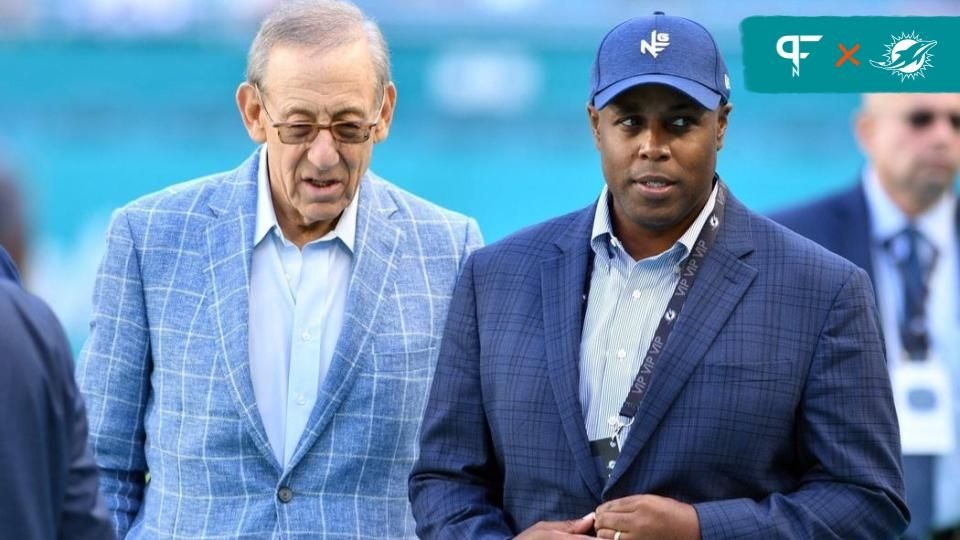With the Miami Dolphins at a challenging 6-8, the playoffs seem to be just out of reach, leaving the team with a slim 5.1% chance. It’s a tough pill to swallow, but with this reality, there’s room for reflection on how the team’s top brass and players have been navigating the season so far. At the heart of this discourse is always the quarterback, football’s most pivotal position.
Tua Tagovailoa’s summer contract extension turned heads. With an annual payout of $53.1 million and $167 million guaranteed, it’s a hefty price tag.

The rationale from Chris Grier and his front office team is understandable—franchise quarterbacks are scarce, and when you find one with promise, you understandably want to lock them down. Nonetheless, such a massive investment in Tagovailoa is raising eyebrows and questions.
Tagovailoa isn’t without his strengths. His precision, anticipation, and rapid release align perfectly with Mike McDaniel’s high-octane offense.
But there are limitations to consider. His ability to transcend the level of a good quarterback has been questioned, particularly regarding whether he can steer a team to a Super Bowl.
Reflecting on his track record in crucial games, fans are left asking for more.
It’s not just the recent struggles that are at the center of the critique; it’s a series of performances that have unfolded over the years. Tagovailoa’s time in the pocket has highlighted gaps in arm strength and consistency, making the offensive team’s dependence on him a contentious topic. His vulnerabilities are out in the open, especially against the cover two zone strategy, which opponents deploy 26% of the time against Miami, yielding proven results.

The Dolphins’ emphasis on speed within their offensive schemes under Chris Grier and Mike McDaniel has not been without its critics. Although there’s excitement in that speed, it risks predictability.
Their running game, averaging under four yards per carry, feels lackluster and underpowered, standing in contrast to past seasons where outside-zone runs provided significant yardage. Defenses are starting to catch on, highlighting the need for a strategy shake-up.
Mike McDaniel came in with much fanfare, and while there’s still hope pinned on his leadership, the results have been a mixed bag. They’ve seen a dramatic fall in offensive rankings this season, sitting at 24th in points scored and 31st in rushing EPA—a significant drop from last year. The adjustments necessary to counter opponents’ adapted strategies remain elusive.
On a brighter note, the defensive unit under Anthony Weaver has shown promising signs. Rookie Chop Robinson has quickly made his presence felt, shaping up to be a cornerstone piece, while veterans Zach Sieler and Calais Campbell work hard to fill the gaps left by Christian Wilkins’ departure. The defense, allowing the 13th fewest points, displays potential beyond its ranking.
But even with the luminous talent of Jalen Ramsey, Tyreek Hill, and Terron Armstead, age becomes a silent player in this game. They’re performing well, yet there’s an underlying urgency to capitalize on their prime while it lasts.
General manager Chris Grier, while responsible for some masterful trades, continues to make bold moves, like drafting several speed-centric players such as Jaylen Wright and Malik Washington. It’s a strategy that, while aligning with their fast-paced approach, begs the question of its long-term viability. At some point, speed alone may not suffice.
The Miami Dolphins find themselves at a crossroads. The team’s direction, from personnel decisions to drafting strategies, needs a critical eye to ensure a competitive future. With plenty of questions in the air, the Dolphins have ample motivation to reassess, recalibrate, and aim for a brighter horizon.




